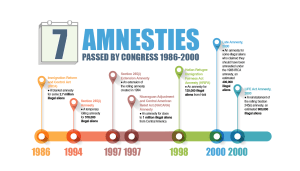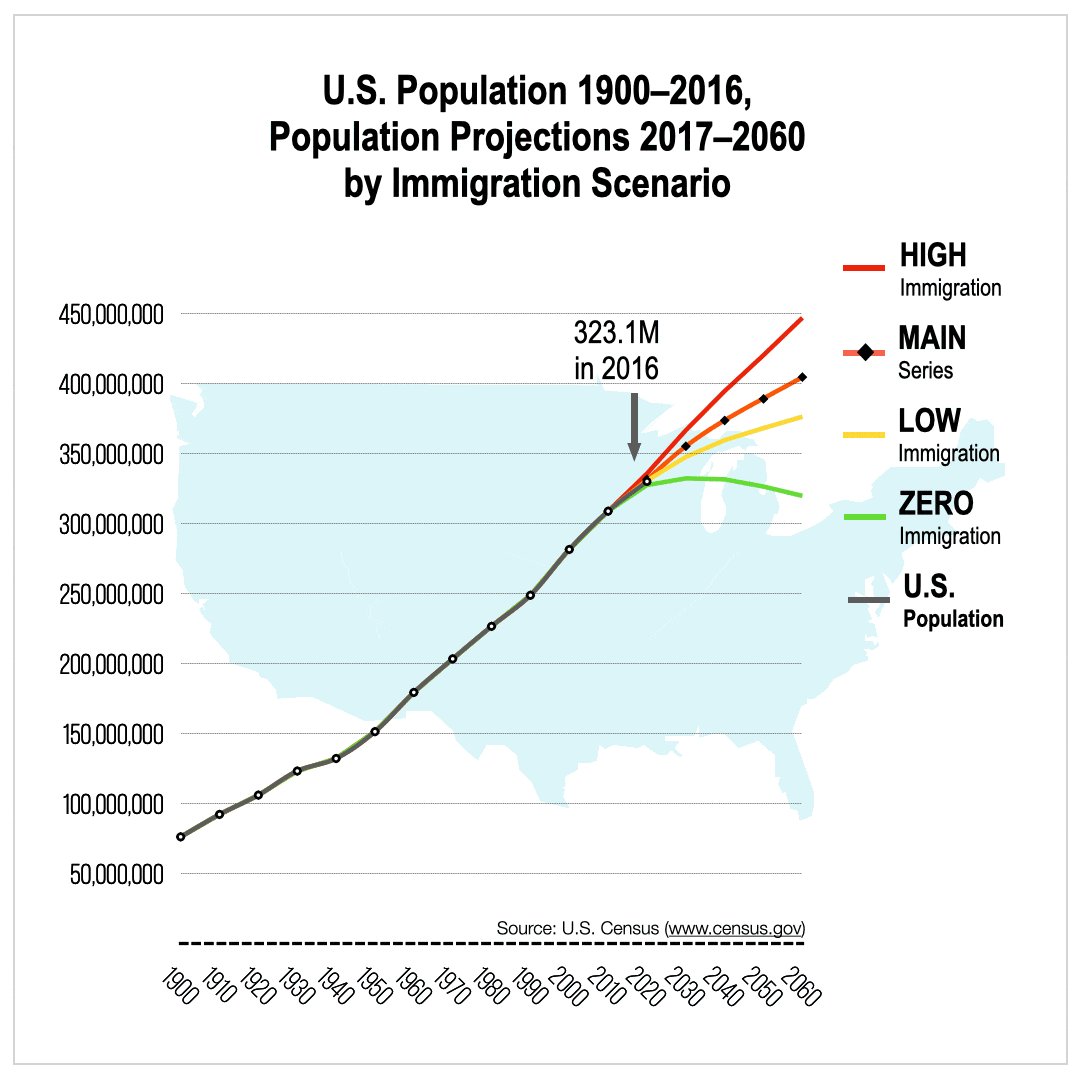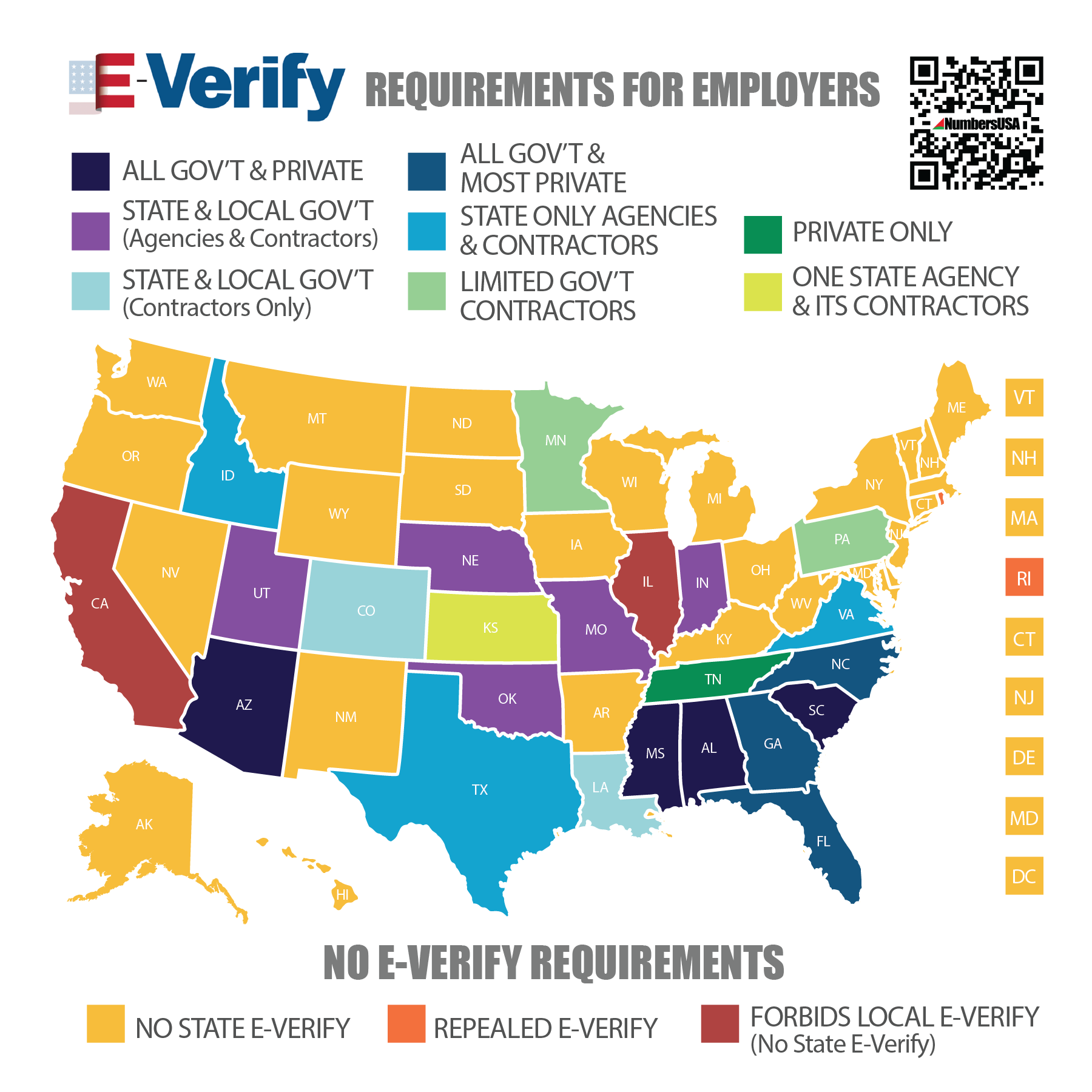Frequently Asked Questions
Illegal Immigration Questions
What makes a migrant inadmissible?
Countless different things can make a foreign national inadmissible to the United States. USCIS splits up inadmissible factors into eight categories – inadmissibility due to:
What are deportable offenses for legal migrants already in the United States?
The five major categories of deportable crimes are crimes of moral turpitude, aggravated felonies, drug offenses, firearms offenses, and domestic violence. Except for crimes of moral turpitude, all categories of deportable offenses have set definitions within the Immigration and Nationality Act (INA).
What are bars on reentry?
Bars on reentry are consequences for illegal presence in the United States. Unlawful presence is when an alien is in the United States without being admitted or paroled or without a “period of stay authorized by the Secretary.” The alien will be found inadmissible:
What is Expedited Removal?
Expedited removal allows an alien to be denied entry to and/or deported without going through official removal proceedings before an immigration judge. The legal authority for expedited removal, in the Illegal Immigration Reform and Immigrant Responsibility Act of 1996, allows for its use against most illegal aliens who have been in the United States for less than two years.
What are Sanctuary Jurisdictions / How many are there? / Are they legal?
These cities, counties, and states have laws, ordinances, regulations, resolutions, policies, or other practices that obstruct immigration enforcement and shield criminals from ICE — either by refusing to or prohibiting agencies from complying with ICE detainers, imposing unreasonable conditions on detainer acceptance, denying ICE access to interview incarcerated aliens, or otherwise impeding communication or information exchanges between their personnel and federal immigration officers.
This term can also be used, while less common, to describe states that provide State IDs, driver’s licenses, in-state tuition, and local voting rights to illegal aliens.
For a complete list, please see the Center for Immigration Studies’ Map.
What is Deferred Enforced Departure?
Deferred Enforced Departure (DED) is an administrative deferral of deportation ordered by the President. The authority to extend DED arises from the President’s constitutional authority to conduct the foreign relations of the United States. The President can authorize DED for any reason related to this authority. DED has been authorized in situations where foreign nationals or other groups of noncitizens may face danger if required to return to their countries.
Although DED is not a specific immigration status, it is, in effect, another deportation amnesty as individuals covered by DED are not subject to removal from the United States, usually for a designated period.
How many illegal aliens currently reside in the United States?
While it is impossible to tell exactly how many illegal aliens currently reside in the United States, educated estimates point to an illegal population of approximately 12-15 million.
How many illegal aliens come by crossing the border illegally, and how many become illegal by overstaying a visa?
On average, approximately 600,000 foreign nationals overstay their visas and become illegal aliens each year. This number has remained consistent since the creation of the U.S.’s expansive visa program and historically overshadowed the number of aliens who gain access to the U.S. via illegally crossing the border.
However, since the Biden Administration took office, illegal border crossings have skyrocketed to nearly 2,000,000 per year, vastly overshadowing the approx. 600,000 visa overstays.
Will unlimited immigration solve Social Security?
NO! The bottom line is that immigration isn’t going to help save Social Security. At best it can only prolong the program for a short time while creating an even larger pool of beneficiaries. As presently constructed, the Social Security system will never be able to meet its obligations.
The Social Security program can only be propped up in the short term by mass immigration. It cannot be sustained by immigration. Immigration will have to constantly increase at a rapid rate to fund payouts to beneficiaries until the whole thing collapses, which it will eventually unless serious structural reforms are made.
Legal Immigration Questions
How many legal immigrants does the U.S. add each year?
Each year, the United States grants approximately one million green cards to foreign nationals who become Legal Permanent Residents.
How many guest workers are admitted to the U.S. each year?
Each year, the United States takes in approximately 700,000 to 800,000 foreign guest workers spread predominantly across four H visa categories;
O-visas are also available for those with exceptional abilities, and L-visas are available for intracompany transfers.
How many amnesties have been passed by Congress?
Since the passage of the Immigration and Reform Control Act (IRCA), 6 million illegal aliens have received amnesty in the United States under eight different laws.

For more information, please click here.
What federal agencies play a role in immigration?
What is amnesty?
“A pardon extended by the government to a group or class of persons, usu. for a political offense; the act of a sovereign power officially forgiving certain classes of persons who are subject to trial but have not yet been convicted.”
Black’s Law Dictionary 983 (9th ed. 2009).
Learn more here.
What's the difference between an Asylee and a Refugee?
A refugee is a person outside his or her country of nationality who is unable or unwilling to return home because of a well-founded fear of persecution on account of race, religion, nationality, membership in a particular social group, or political opinion.
An asylee is a person who meets the definition of a refugee and is already present in the United States or is seeking admission at a port of entry.
Refugees are required to apply for Lawful Permanent Resident (“green card”) status one year after being admitted, and asylees may apply for green card status one year after their grant of asylum. (DHS)
What is Birthright Citizenship?
Jus soli (the law of the soil) is a rule of common law under which the place of a person’s birth determines citizenship; the practice is colloquially known as Birthright Citizenship in the United States. The U.S. and Canada are the only developed nations that grant automatic citizenship so expansively to children born within their borders.
Under current practice, anyone born in the United States is considered an American citizen regardless of whether the parents are U.S. citizens, legal residents, temporary visitors, or illegal aliens. Automatic citizenship is granted according to the INA, not the 14th Amendment, but the key phrase in both is “and subject to the jurisdiction thereof.” Unfortunately, determining the legal definition of this phrase is a highly contested topic.
What is the foreign-born population of the United States?
The Census Bureau’s monthly Current Population Survey (CPS) shows that the total foreign-born or immigrant population (legal and illegal) in the U.S. hit 47.9 million in September 2022 — a record high in American history — and an increase of 2.9 million since January 2021. At 14.6 percent, the immigrant share of the U.S. population is now slightly below the all-time highs reached in 1890 and 1910. If present trends continue, the foreign-born share will surpass the all-time highs reached more than a century ago this year.
Learn more here.
Can states enforce immigration laws?
Although states are able to assist in immigration regulation and enforcement (like the 287(g) program), it is the federal government, and the federal government alone, that has the legal power to enforce U.S. immigration laws.
What role does immigration play in U.S. population growth.
The population of the United States is over 334,900,000 and grows approximately every eight seconds. The Census Bureau states that if immigration were reduced to a pure replacement level, the United States population would still be growing at the end of the century because of the momentum created by the last three decades of immigration.

Population counter – https://www.census.gov/popclock/
What percentage of population growth in the United States is driven by immigration?
The Congressional Budget Office projects all population growth to be driven by immigration after 2043. Immigration (1,010,923) was directly responsible for 80 percent of U.S. population growth between 2021-2022; “natural change” added 245,080. The Congressional Budget Office projects a population increase “from 336 million people in 2023 to 373 million people in 2053,” with most of that being driven by immigration:
Over the next decade, immigration accounts for about three-quarters of the overall increase in the size of the population, and the greater number of births than deaths accounts for the remaining one-quarter. After 2033, population growth is increasingly driven by net immigration, which accounts for all population growth beginning in 2042.
Since the nation’s founding in 1776, immigration has been responsible for 55% of population growth in the United States. Since the Immigration and Nationality Act of 1965, immigration has been responsible for approximately 59% of population growth in the United States.
What is DACA?
The Deferred Action for Childhood Arrivals program, otherwise known as DACA, is a deportation amnesty announced by President Barack Obama via executive action on June 15, 2012. The EO granted qualifying illegal aliens a postponement of any potential immigration enforcement, a 2-year renewable court date, and legal eligibility to work in the U.S. More than 900,000 illegal aliens have received a temporary deportation amnesty through the program.
To be eligible, aliens must have illegally arrived in the U.S. prior to turning 16 and before June 15, 2007; be under the age of 31 as of June 15, 2012 (42 as of 2023); be currently enrolled in school, have completed high school or its equivalent or be a veteran; and have not been convicted of a felony, significant misdemeanor, or 3 or more misdemeanors occurring on separate dates from separate acts and does not pose a threat to national security or public safety.
Currently, after a national injunction, DHS cannot process new DACA applications but aliens already covered by the executive amnesty retain the ability to stay and work in the country until the constitutionality of the program is ultimately decided by the Supreme Court.
What is E-Verify?
E-Verify is the free, online system that verifies a new hire is authorized in the United States. It is currently voluntary in most states.
Map – 
Page – https://numbersusa.com/reenvisioned/solutions/mandatory-e-verify/
What is Humanitarian Parole?
Humanitarian Parole is intended as a rarely used discretionary grant of temporary permission to enter the United States, allowing individuals who are otherwise inadmissible to enter the country for a limited period of time due to urgent humanitarian reasons, such as a medical emergency or urgent family situation.
What is Advanced Parole?
Advance Parole is a travel document issued by USCIS that allows certain migrants to travel outside the United States and return lawfully without fearing being denied reentry. AP is typically used for DACA recipients, aliens with Temporary Protected Status, and refugees who must leave the United States for humanitarian, educational, or employment reasons. This practice does create a loophole in the country’s immigration system where illegal aliens without lawful status receive advanced parole to leave and return to the United States. However, their return is thus considered ‘lawful admission,’ making the illegal alien eligible to adjust their immigration status.
What are Alternatives to Detention?
According to the pro-migration American Immigration Council, “Alternatives to detention (ATDs) are defined as ‘any legislation, policy or practice, formal or informal, that ensures people are not detained for reasons relating to their migration status.’”
ATDs can refer to a wide range of programs. Generally, alternatives to detention in the immigration context fall into the following categories:
ATD programs are primarily operated by ICE in the United States. The budget for ATDs has steadily risen in the last five years, going from $126 million to enroll 53,000 individuals in ATDs in Fiscal Year (FY) 2017 to $443 million in FY 2022. In March 2022, ICE was monitoring 182,607 people in its ATD programs.
These programs are used in the illegal practice of “catch and release,” where illegal aliens are caught at the border after illegally crossing and released following one of the categories above. Under the Biden Administration, a historic number of illegal aliens have been “caught” and released into the nation’s interior.
What is Public Charge?
For over 100 years, the “public charge” doctrine has served as a cornerstone of U.S. immigration law that sits at the nexus of welfare reform and immigration policy. According to this deeply embedded principle, the U.S. should deny admission and permanent residence to an individual likely, at any time, to depend upon the government for subsistence.
What is OPT / How was it created?
Optional Practical Training (OPT) is temporary employment eligibility that is directly related to an M-visas, J-visas, and F-1 foreign students’ major area of study. Eligible students can apply to receive up to 12 months of OPT employment authorization before completing their academic studies and/or after completing their academic studies. The program promotes discriminatory hiring practices as employers do not have to pay FICA or Medicare taxes for OPT employees like they do when hiring Americans.
OPT was created to give foreign students extra tools to help their home countries once they return after school but is more often used to get around the H-1B visa cap. The Bush administration bypassed Congress and extended the OPT from 12 months to 29 months. In 2012, the Obama Administration expanded the list of degree programs that qualify graduates for OPT.
Foreign students who have earned a degree in certain science, technology, engineering, and math (STEM) fields may apply for a 24-month extension of their post-completion OPT employment authorization if they:
What is TPS?
Temporary Protected Status (TPS) is a designation granted by the Secretary of Homeland Security that grants a temporary deportation amnesty for foreign nationals in the U.S. whose home country is experiencing conditions that temporarily prevent the country’s nationals from returning safely or, in certain circumstances, where the country is unable to handle the return of its nationals adequately.
The Secretary may designate a country for TPS due to the following temporary conditions in the country:
Afghanistan, Burma, Cameroon, El Salvador, Ethiopia, Haiti, Honduras, Nepal, Nicaragua, Somalia, South Sudan, Sudan, Syria, Ukraine, Venezuela, and Yemen are all currently designated for TPS.
What is the Diversity Visa Lottery?
The Diversity Visa Program, often referred to as the “Visa Lottery,” was established in 1990. Under this program, 55,000 visas are allocated annually via a random process to natives of countries that have relatively low rates of immigration to the United States. In 1997, 5,000 of these visas were reserved for individuals who qualified for legal permanent resident status under the Nicaraguan Adjustment and Central American Relief Act. Those 5,000 visas are not granted under a lottery process.
What is Chain Migration?
Chain Migration refers to the endless chains of foreign nationals who are allowed to immigrate to the United States as a result of citizens and lawful permanent residents being allowed to sponsor their non-nuclear family members.
An immigration “chain” starts with an original Immigrant being allowed to bring in his/her nuclear family consisting of a spouse and minor children. After that, the chain begins. Once the Original Immigrant and his/her spouse become U.S. citizens, they can then petition for their parents, adult sons/daughters, and adult siblings, who then petition for their spouses, parents, children, and adult siblings, and so on.
The Family-Chain categories are divided into four separate preferences:
What are Special Immigrant Visas?
The Special Immigrant Visa is an immigration program that grants permanent residence to people who aid the U.S. government abroad, particularly during wartime.
What are the categories of admission for legal immigration to the United States?
The Immigration and Nationality Act (INA) provides several broad classes of admission for foreign nationals to gain Legal Permanent Resident status, the largest of which focuses on admitting immigrants for the purpose of family reunification. The categories are:
Can guest workers become permanent residents?
Guest worker programs are not intended to lead to citizenship or permanent residence or to reunite families. While most visa programs do not offer guest workers a pathway to permanent residence status, some exceptions exist for highly-skilled workers in the US, and any guest worker can apply for a “change of status.”
